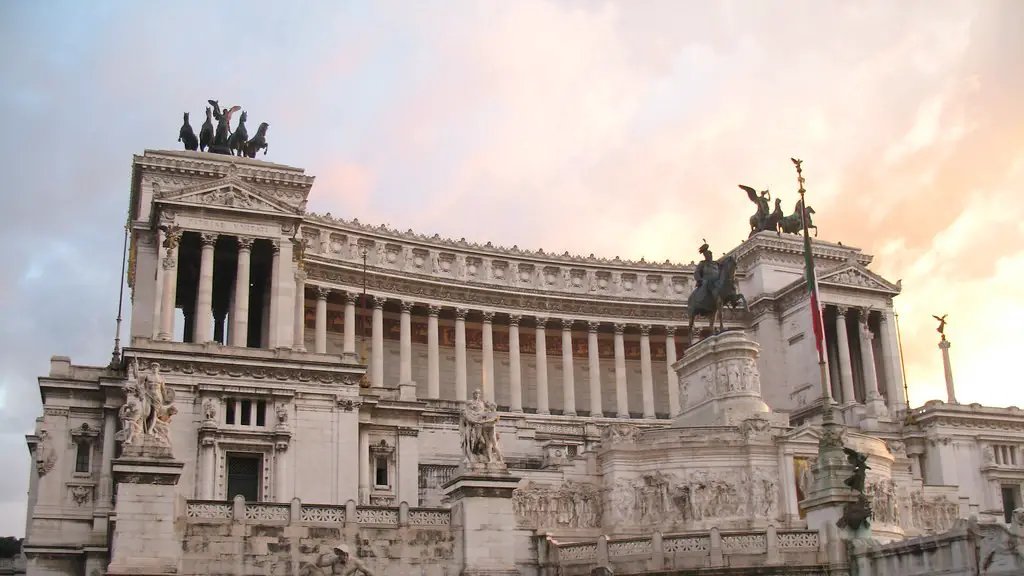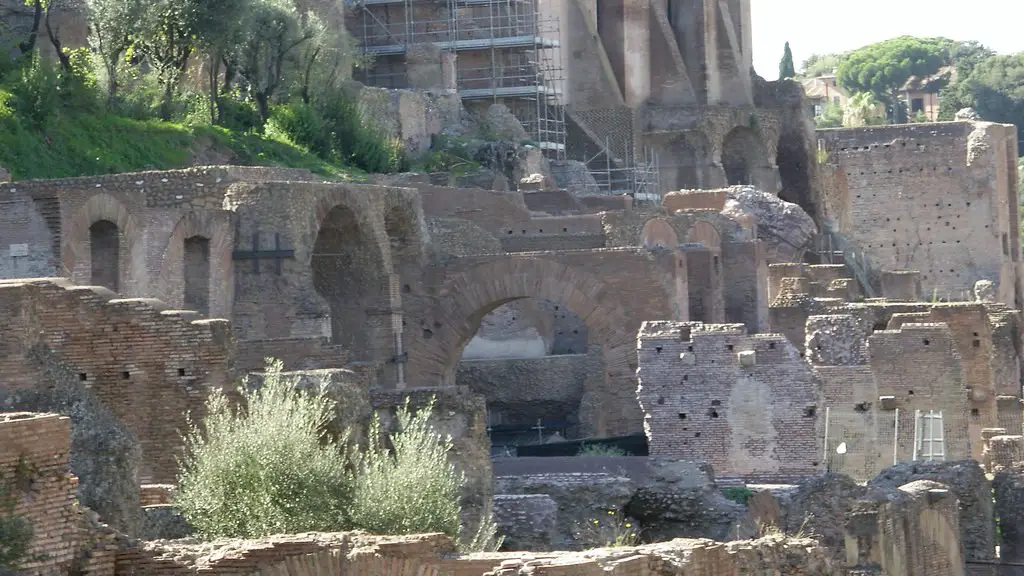The grain distribution system in Ancient Rome was an important innovation that provided a stable food supply in the capital city. It allowed the Romans to develop a highly organized and efficient system for growing and distributing grain, which helped to improve the quality and standard of living in the city. However, there were some drawbacks to the grain distribution system in Ancient Rome.
First of all, the grain distribution system relied heavily on slave labor. The slaves were used to work in the fields, help transport the grain to the city, and even sell it in the markets. This meant that many of the benefits of the grain distribution system were not felt by the slaves and those in the lower classes who worked in the fields. The system also failed to take account of seasonal variations and the needs of the local population. This resulted in food shortages during the winter months and potentially contributed to high levels of famine and malnutrition.
Another major drawback of the grain distribution system was that it was prone to corruption. The rulers in Rome were not always able or willing to keep a check on the prices and the quantity of grain that was being sold in the markets, leading to people exploiting the system to make money. Bribes were also common in order to get better deals and access to more grain. This highlighted the disparity between the rich and the poor, since only those with money were able to benefit from the system.
Finally, the grain distribution system was also inefficient in terms of storage and distribution. The grain was stored in large silos in the city, which were prone to pest infestation and spoilage. Furthermore, it was difficult to transport the grain from the farms to the city due to the primitive transportation system. This inefficiency often led to a shortage of grain in the city, resulting in higher prices and shortages for the general population.
The Impact On The Poor
The grain distribution system in Ancient Rome had a considerable impact on the poor. Many of the poorer members of society could not afford to purchase the grain from the markets due to their low incomes, which meant that they had to rely on hand-outs. This was not always reliable, as the grain hand-outs were often only available during a specific time period or after other stipulations had been met. This left many of the poor in a dire situation, with little access to food or proper nutrition.
Furthermore, the demand for grain was such that many of the poorer farmers had to sell or lease their lands in order to meet the grain requirements of the city. This had a significant impact on those struggling to survive, as they were unable to grow their own crops or keep animals, making it increasingly difficult for them to survive. This decrease in farmland availability and production also had a negative impact on the overall food supply in the city.
Finally, the grain distribution system created further inequality as it only benefited certain groups of people. Those in positions of wealth and power such as the political elite were major beneficiaries of the system, whilst the poorer classes of society saw virtually no benefit from it. This kind of inequality only served to further entrench the divide between the rich and poor in the city.
Environmental Impact
The grain distribution system also had an adverse environmental impact. As production levels increased to meet the demands of the city, more land was needed for growing the grain. This often meant that wildlife and natural habitats were destroyed in order to make way for farmlands. This had a negative impact on the environment, as it caused an imbalance between the natural ecology and man-made farmlands.
The unsustainable farming methods used to increase production also caused soil erosion and degradation in some areas. This further added to the environmental impact, as it reduced soil fertility and caused the land to become barren, leading to an inability to produce food. All of these negative impacts on the environment only served to reduce the overall food supply and the quality of life in the city.
Furthermore, due to the inefficient use of water, areas such as the Mediterranean region suffered from water shortages. This was mainly due to the inefficient irrigation systems in place at the time, which were not able to adequately supply water to all of the farms that were producing the grain. These water shortages only served to further exacerbate the food shortage in the city, as water is essential for successful crop growth.
Urbanization
The grain distribution system in Ancient Rome also played an important role in the development of the city. As the demand for grain increased, so did the demand for labor, which resulted in a high influx of immigrants from all over the Roman Empire. This created a large and diverse population in the city, which in turn allowed for rapid urbanization and the emergence of new industries. The increased number of people living in the city also provided the necessary labor for the construction of the many public structures, monuments and buildings that are still present in Rome today.
The influx of people also changed the culture and lifestyle in the city, as people from different regions, cultures and religions started to come together in Rome. This diversity allowed for the emergence of new ideas and cultures, which in turn gave rise to many of the advances in art, science and technology that are seen today. This was only possible due to the increased availability of food, resulting from the efficient grain distribution system in Ancient Rome.
Political Impact
The grain distribution system had a major political impact in Ancient Rome, as it provided the necessary resources for the city-state to grow and expand. It allowed the city to become more powerful and influential in the region, sparking conflict with other powers. The wealth generated from the grain trade enabled the city to build a strong military force and provided the resources necessary to fund wars and conquer other lands. This was a major source of power for the city-state and eventually enabled the rise of the Roman Empire.
Furthermore, the grain distribution system also had a major impact on politics in the city itself. The system was largely seen as a way for the rulers to maintain control over the population and to cement their own power. Rulers were able to manipulate the prices of grain and the quantity available in order to sway public opinion or to ensure they were able to stay in power. This manipulation of the grain supply was instrumental in the development of politics in Rome and enabled the rise of the Roman Empire.
Finally, the grain distribution system also played a role in the development of the Roman economy. The influx of grain from the farms allowed for increased trading and commerce, which generated wealth for the city. This wealth was then redistributed amongst the elites, leading to the emergence of a more sophisticated economy and business environment in the city. This emergence of a more prosperous economy also contributed to the rise of the Roman Empire.
Social Impact
The grain distribution system in Ancient Rome also had a significant impact on society. As the demand for grain increased, so did the population of the city. This in turn allowed for the emergence of a sophisticated social structure, as different classes were created and power dynamics shifted within the city. Those in wealthier classes were able to benefit from the grain distribution system more than those in poorer classes, creating a large gap in terms of wealth and resources.
The increased availability of food also led to improved public health in the city. As a greater number of people had access to quality food, diseases such as famine, malnutrition and starvation started to decline. This allowed for more people to live longer and healthier lives, helping to boost the overall quality of life in the city. This was a major factor in the rise of the Roman Empire.
Furthermore, the improved food supply also allowed for a larger population, which enabled the emergence of new cultural aspects. As the population increased, so did the demand for entertainment and leisure activities such as theatres, sporting events and games. This led to the emergence of new cultural practices and beliefs, which laid the foundation for many of the ideas present in modern day society.
Finally, the grain distribution system also helped to create a more organized society. This was due to the introduction of new laws and regulations regarding grain production and distribution, which helped to ensure that everyone had access to an adequate supply of food. This in turn allowed for the creation of an orderly and efficient system of government in the city, which laid the groundwork for the emergence of the Roman Empire.




